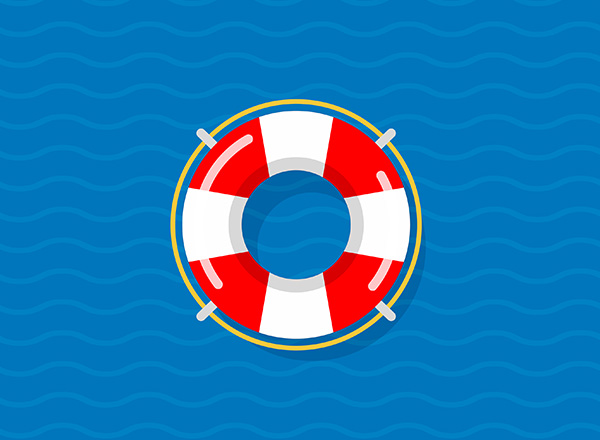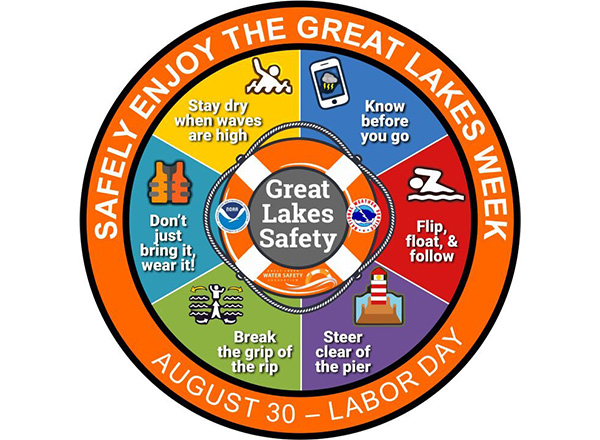“Safely Enjoy the Great Lakes Week” Aug. 30 to Sept. 5

Labor Day signifies the end of summer and the start of the new school year. The long weekend is the last hurrah of the summer season for many.
Wednesday, Aug. 30, to Monday, Sept. 5 (Labor Day), is Safely Enjoy the Great Lakes Week. Over the upcoming holiday weekend, thousands of people will flock to the state’s beauteous Great Lakes to enjoy a fun-filled late-summer plunge.
It is easy to ignore or underestimate the hazards of rip currents or other hidden dangers on the Great Lakes. Every year, people lose their lives to these hazards in our Great Lakes. Being aware and knowing what to do can save your life.
What is a rip current?
A rip current is a type of water current that can occur near beaches with breaking waves. It is a strong, localized, and narrow current of water that moves directly away from the shore, cutting through the lines of breaking waves like a river running out to sea. A rip current is strongest and fastest nearest the surface of the water.
Rip currents can be extremely hazardous to swimmers. Swimmers who are caught in a rip current and who do not understand what is happening may not have the necessary skills, may panic, or may exhaust themselves by trying to swim directly against the incredibly powerful flow of water. Since 2010, rip currents have cost more than 600 people their lives on the Great Lakes.
Great Lakes Water Safety Consortium
Jamie Racklyeft, husband of HFC Chair of Communication & Media and WHFR General Manager Susan McGraw, almost became one of those statistics. It has been 10 years since Racklyeft nearly drowned in a rip current while vacationing in Michigan’s Leelanau Peninsula. (Read Jamie's story here).
When Racklyeft went for a swim in Lake Michigan on that gorgeous, sunny day in August 2012, he was pulled under by a rip current. He would have died if not for two complete strangers who rescued him on a kayak. Days later, Racklyeft learned that, an hour after he was saved, a 16-year-old boy was caught in the same rip current and drowned. Hearing that news devastated him.
As a result, Racklyeft founded the Great Lakes Water Safety Consortium (GLWSC), a nonprofit organization dedicated to end drowning in the Great Lakes. His efforts got the attention of Channel 4 (WDIV-TV) in Detroit (see video below).
Flip, float, and follow
Here are tips on how to prepare for rip currents when swimming, information for parents and educators, and information for lifeguards and other beach/park employees. If you find yourself caught in a rip current, obey the 3 Fs: flip, float, and follow. Flip onto your back and float. While floating, keep your head above water and conserve energy. Do not give into panic; remain calm.
Follow the safest course to safety:
- Do not fight the rip current
- Follow the rip current to assess which way it’s flowing
- Swim perpendicular to the flow
- If you’re too tired to swim, continue floating to conserve energy
- Signal somebody for help
Enjoy the Labor Day weekend and be safe while swimming.
Jamie Racklyeft's survival story
